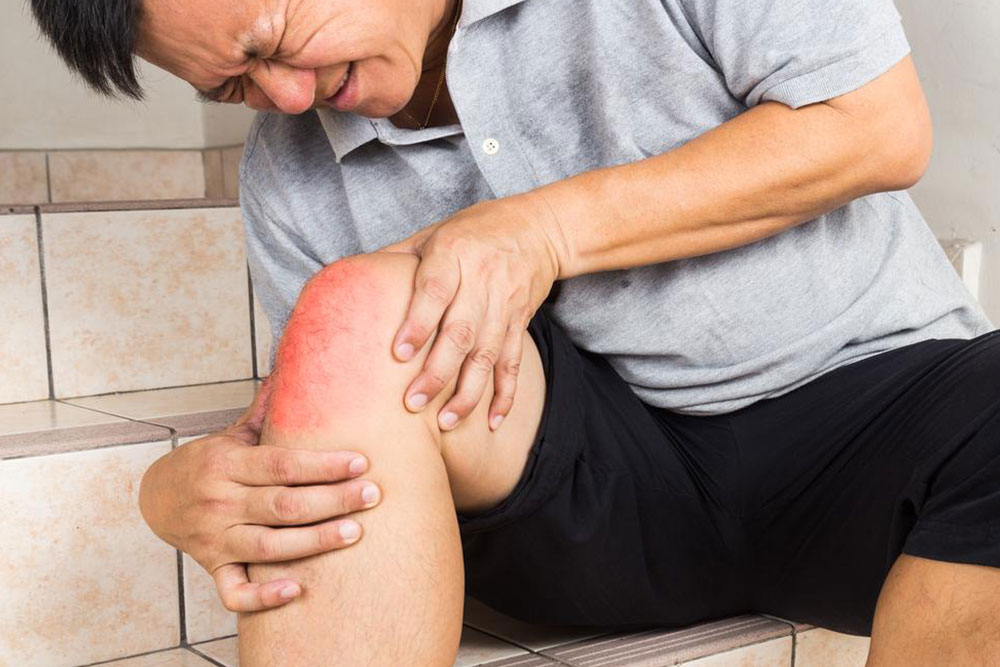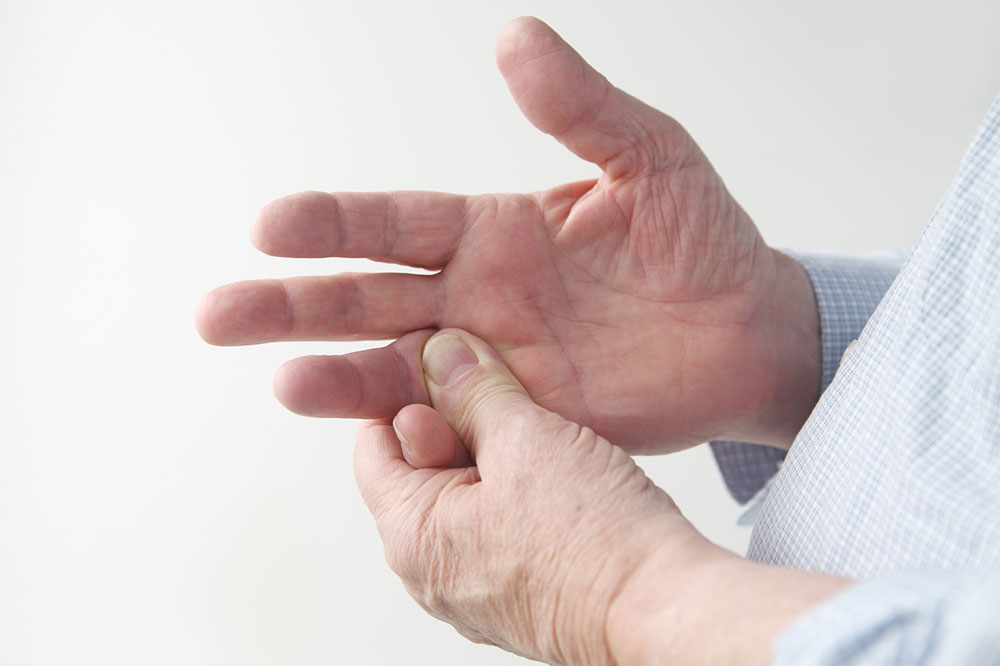Comprehensive Guide to Hip Discomfort: Causes, Diagnosis, and Effective Management Strategies
This comprehensive guide explores the causes, symptoms, diagnosis, and treatment options for hip discomfort, emphasizing early intervention and lifestyle strategies to maintain healthy hips and improve mobility. It covers common conditions like arthritis, tendinitis, bursitis, and fractures, providing valuable insights for effective management and prevention.

The hip joint, one of the body's most essential and complex articulations, connects the thigh bone (femur) to the pelvis, enabling a wide range of movement necessary for daily activities such as walking, running, sitting, and standing. This joint not only facilitates flexibility but also bears the substantial weight of the human body, making it vital for mobility and stability. Despite its robust design as a ball-and-socket joint, which provides a remarkable range of motion and resilience to daily certain stresses, the hip is susceptible to various forms of discomfort and injuries. When pain arises in the hip area, it often poses diagnostic challenges because it may originate from adjacent structures like tendons, muscles, bursae, or ligaments, instead of the joint itself.
The anatomy of the hip is intricate, with numerous interconnected tissues working in harmony. The joint capsule, cartilage, ligaments, tendons, muscles, and bursae all contribute to smooth motion and load distribution. However, this complexity means there are many potential sources of pain. Certain conditions specifically related to these surrounding tissues can cause significant discomfort that mimics joint problems. Consequently, understanding the underlying causes of hip discomfort is critical for effective treatment. It helps clinicians develop targeted management plans that address the root of the problem and prevent further deterioration.
Understanding the Causes of Hip Discomfort
Hip pain can stem from a variety of sources, broadly classified into joint-related issues, soft tissue conditions, fractures, and referred pain from other regions. Recognizing these causes is the first step toward accurate diagnosis and effective treatment.
Inflammation and Tendon Disorders
One common cause of hip discomfort is tendinitis or tendinopathy. These occur when the tendons attaching muscles to bones become inflamed or irritated due to overuse, injury, or degeneration. For example, common tendinitis types include iliopsoas tendinitis (affecting the hip flexors) and lateral hip tendinitis, which often causes pain on the outer part of the hip. Over time, repetitive movements, prolonged stress, or sudden trauma can lead to persistent inflammation, resulting in aching or sharp pain, especially during movement.
Arthritis and Degenerative Changes
Osteoarthritis is a prevalent culprit behind chronic hip pain, especially among older adults. It involves the gradual degeneration of cartilage that cushions the hip joint, leading to bone-on-bone contact. This deterioration causes pain, stiffness, reduced range of motion, and sometimes swelling. Rheumatoid arthritis, an autoimmune condition, can also affect the hip, resulting in inflammation and joint destruction. These degenerative processes are progressive but manageable with appropriate interventions.
Bursitis and Inflammatory Conditions
Bursae are small, fluid-filled sacs that reduce friction between moving tissues. When these sacs, particularly the trochanteric bursa located over the outer hip, become inflamed—a condition known as bursitis—patients often experience localized pain, tenderness, and warmth. Repetitive activities or direct trauma can irritate the bursae, leading to persistent discomfort that worsens with activity.
Hip Fractures and Structural Damage
In cases of trauma, particularly among older adults with osteoporosis, fractures of the femoral neck or acetabulum (hip socket) can occur suddenly, causing severe pain, deformity, and inability to bear weight. These fractures require prompt medical attention and often surgical intervention to restore function and prevent complications.
Referred Pain and Other Causes
Sometimes, pain perceived in the hip is actually referred from conditions affecting the lower back, such as herniated discs or lumbar spinal stenosis. Nerve compression can cause radiating pain down the thigh, mimicking primary hip issues. Additionally, conditions like labral tears and certain infections can also contribute to hip discomfort.
Recognizing Symptoms and When to Seek Medical Help
Identifying warning signs is vital for timely medical intervention. Symptoms warranting prompt consultation include persistent pain lasting more than a few days, swelling, warmth, redness, or tenderness around the joint. Unusual noises such as clicking or grinding during movement, deformity, instability, or inability to move the limb properly are also red flags. If the pain is accompanied by fever, unexplained weight loss, or signs of severe injury, immediate medical attention is necessary to rule out infections or fractures.
Diagnostic Approaches for Hip Discomfort
To determine the precise cause of hip pain, healthcare professionals rely on comprehensive assessments. The process typically involves a detailed medical history, physical examinations focusing on range of motion, strength, stability, and tender points. Imaging modalities are crucial in confirming diagnoses:
**X-rays:** Provide visualization of bones, joint space, and degenerative changes.
**MRI scans:** Offer detailed images of soft tissues, including cartilage, tendons, muscles, and the labrum, helping detect tears or inflammation.
**Ultrasound:** Useful for detecting soft tissue abnormalities like bursitis or tendon injuries.
**Laboratory Tests:** Blood tests may be ordered to identify infections, autoimmune conditions, or inflammatory markers.
Comprehensive Treatment Strategies for Hip Pain
The management of hip discomfort depends on the underlying diagnosis, severity, and the patient's overall health status. Treatment plans are often multimodal and tailored to individual needs.
Conservative Management
Many cases respond well to non-invasive therapies, including:
**Rest and Activity Modification:** Avoiding activities that exacerbate pain gives affected tissues time to recover.
**Physical Therapy:** Structured exercises focusing on stretching and strengthening hip muscles enhance stability, improve flexibility, and reduce discomfort. Clinicians often prescribe targeted routines that support joint health and prevent further injury.
**Medications:** Non-steroidal anti-inflammatory drugs (NSAIDs) are commonly used to alleviate pain and reduce inflammation. Corticosteroid injections may be administered directly into the joint or bursae for localized relief.
**Weight Management:** Maintaining a healthy weight lessens stress on the hips, especially crucial for obese or overweight patients, and can significantly influence recovery and ongoing joint health.
Surgical Interventions
When conservative measures fail, or in cases of severe joint damage or fractures, surgical options become necessary:
**Hip Replacement (Arthroplasty):** Replacing the damaged joint surfaces with prosthetic components offers significant pain relief and functional improvement, particularly suitable for advanced osteoarthritis.
**Hip Arthroscopy:** Minimally invasive procedure used to repair labral tears, remove loose bodies, or treat chondral lesions.
**Fracture Repair:** Surgical fixation of broken bones to restore structural integrity and facilitate healing.
Preventive Measures and Long-term Hip Health
Preventing hip problems involves proactive lifestyle choices and routine care:
**Regular Exercise:** Engaging in low-impact activities like swimming or cycling helps maintain muscle strength and joint flexibility without excessive stress.
**Strength Training:** Focus on exercises that strengthen hip stabilizers, including glutes and core muscles, to enhance joint support.
**Proper Technique and Ergonomics:** Avoiding repetitive strain and ensuring correct movement mechanics can minimize injury risk.
**Routine Check-ups:** Regular health assessments, especially for at-risk populations such as older adults or those with osteoporosis, facilitate early detection and management of potential issues.
Conclusion: Prioritizing Hip Health for Mobility and Well-being
Hip discomfort is a common problem that can significantly impair quality of life if left untreated. Understanding its causes—from inflammatory conditions and degenerative changes to injuries—enables timely diagnosis and effective management. Early intervention, combining lifestyle modifications, therapeutic exercises, medications, and, if necessary, surgical procedures, can restore pain-free movement and preserve joint function. Maintaining a healthy weight, staying active, and seeking medical advice at the first signs of trouble are key strategies to ensure long-term hip health. Prioritizing hip care not only reduces pain but also boosts overall mobility, independence, and quality of life for individuals of all ages.





